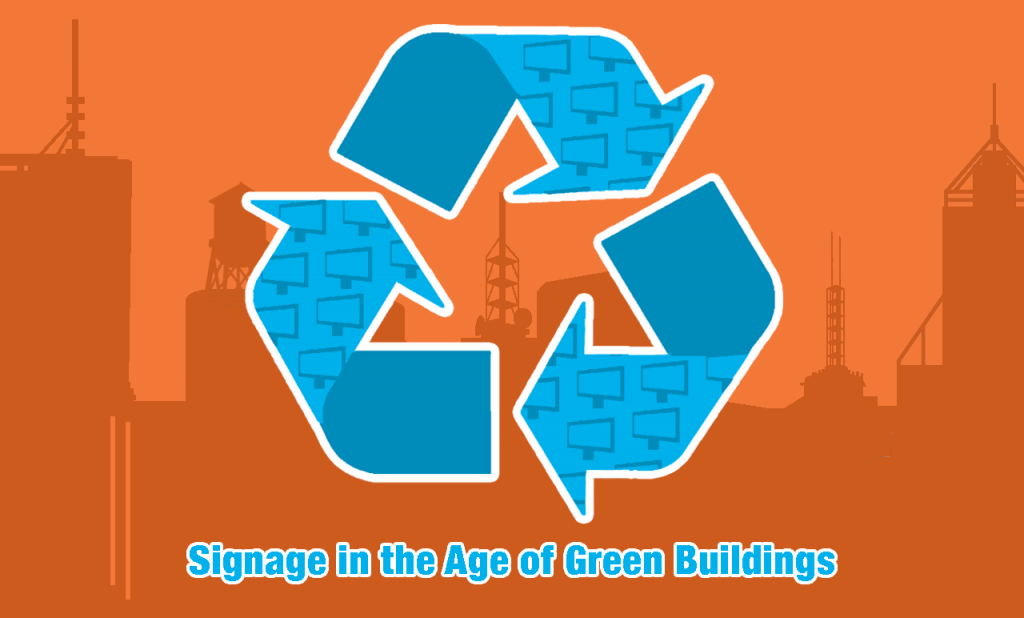
Massive building wraps have become much more prevalent in the OOH industry over the past few years. Building wraps were once reserved only for the king-sized casinos of Las Vegas, but recently they have been finding their way into cities across the globe. Lately though, construction companies are placing an increased importance on developing commercial facilities that are sustainable and energy efficient. Are full-facade advertising wraps and the green world of tomorrow inherently at odds? This blog post will answer that question and inform readers on the factors surrounding it.
LEED Standards
Currently, commercial buildings account for around 41% of the world’s energy consumption. This heavy consumption has driven the industry’s need for a sustainable set of standards and ultimately led to LEED’s preeminent status. LEED, Leadership in Energy and Environmental Design, Standards are established by the U.S Green Building Council (USGBC) and serve as a framework that can be used “to create healthy, highly efficient and cost-saving green buildings.”
Adhering to LEED standards can be done in a variety of ways, such as increasing daylighting, installing low-VOC carpet, or even just being close to public transportation. Hitting certain sustainability benchmarks earn buildings points. Then, once they acquire enough points they are designated as LEED certified. LEED-certified buildings use, on average, up to 11% less water, decrease maintenance costs by 19%, and emit 34% fewer greenhouse gases. Additionally, LEED Certified buildings can often charge their tenants higher rent, and might even receive government-funded tax breaks.
Building Wraps

Building wraps function as massive canvases for OOH advertising. They are offered in virtually any size, lend themselves to intense customization, and can last from just a few weeks to up to almost 5 years. Building wraps can also be used to hide unappealing architectural features or to conceal any ongoing renovations. Additionally, building wraps can be printed and installed relatively quickly, as it takes less than 15 hours to print a 20,000 square foot advertisement. Wraps are usually printed on one of two materials:
- Vinyl: Vinyl wraps offer slightly better readability, but does so while blocking views and limiting the amount of daylight that can enter the space.
- Mesh: Mesh wraps provide tenants with full access to their outdoor views, and only slightly limit the amount of daylight entering the indoor space. Mesh wraps suffer from slightly worse readability, but the effect is minimal due to the usually long distance that wrap ads are viewed from.
Wrap-Up
The question asked at the beginning of the post was, “Are full-facade advertising wraps and the green world of tomorrow inherently at odds?” The simple answer to this query is no. Although building wraps do sometimes hinder the amount of daylight can penetrate a space, the effect of this on the environmental footprint of an entire building is relatively minimal. So even though there are some negative outcomes that come from wrapping a building, the list is very short.
In fact, it would seem that the relationship between wraps, and the buildings they are installed on, is actually mutually beneficial. Wraps that are reflective in nature help to reduce cooling costs in hotter months, while darker wraps that absorb sunlight help to reduce heating costs in cooler months. Another element of this mutualistic relationship pertains to public transportation. Buildings located near transportation hubs are considered to be more environmentally conscious, as it requires less work to reach them. In the OOH industry, locations near transportation hubs are seen as more valuable because they offer higher rates of exposure, and ultimately greater reach.
Today’s world is steadily shifting towards stricter sustainability guidelines and greener practices. Upon inspection, it’s clear to see that building wraps are as eye-catching as they are environmentally conscious. Through it all, OOH persists and manages to remain the lucrative, relevant ad format that it has always been.
Now that you know a little more about building wraps, and their relationship with environmentally sustainable buildings head on over to DOmedia, host of the largest database of OOH vendors in the US, and find the perfect location to place a wrap promoting your brand or company!




